Sun Yega Aricha | the "fruit bomb" coffee that was once popular all over the world remains the same as in those days.
For professional baristas, please follow the coffee workshop (Wechat official account cafe_style)
ETHIOPIA,YIRGACHEFFE,Aricha
Yega Xuefei Arecha G1
Country: Ethiopia
Producing area: Yega Xuefei Gediyo
Processing plant: Aricha processing plant
Altitude: 1900-2100 m
Variety: native species of Heirloom
Treatment: insolation
| 01 | production area profile |
Unique geographical environment
Yirga cheffe is a small town in Ethiopia, 1700-2100 meters above sea level. It is one of the highest coffee producing areas in the world and is synonymous with Ethiopian boutique coffee. Lake Turkana, Lake Abaya and Lake Chamo bring rich water vapor here. The Rift Valley, represented by Misty valley, is foggy all the year round, like spring all the year round, with a gentle breeze, cool and humid, and thousands of coffee trees thrive, giving birth to the unique and unpredictable atmosphere of Yejia Xuefei's unique fragrance of flowers and fruits.
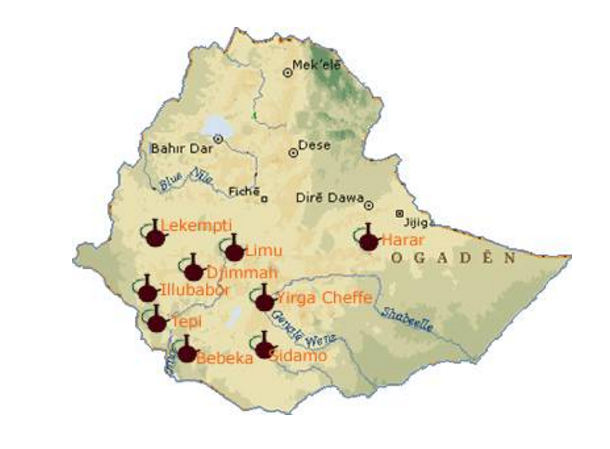
There are many high-quality coffee processing plants in the Yegashafi region, and a lot of caffeine comes from these processing plants and becomes more expensive. One of them is Kebel Aricha Mill Sunshine Yegashafi, which is also what we often call ARICHA beans. It is rated as Gr.1 or G1 (the highest grade of Ethiopian coffee) by ECX through exquisite sun treatment by Kebel Aricha processing plants, and is known as the "king of fruit".
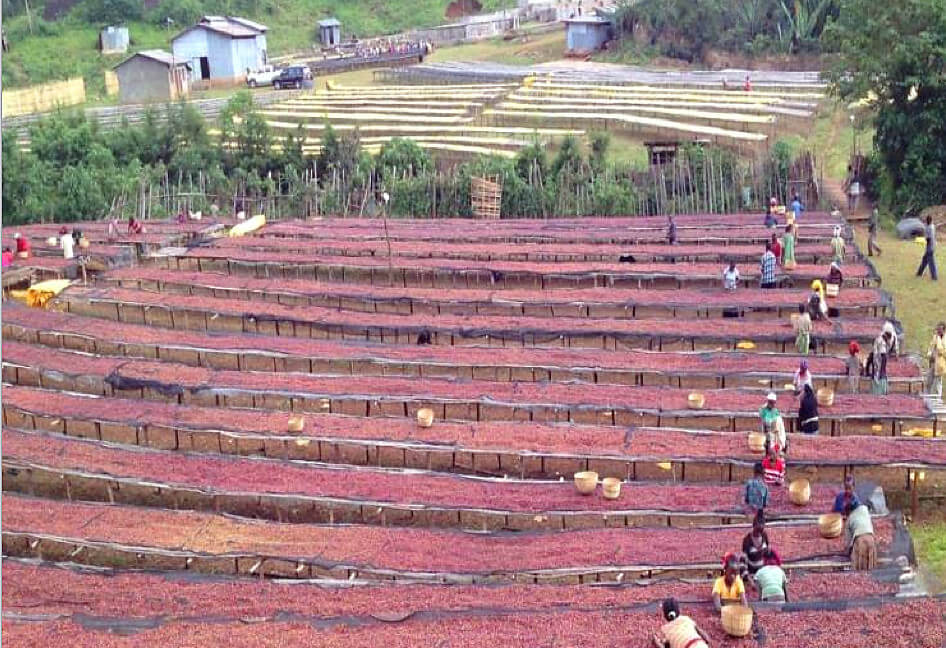
The Kebel Aricha processing plant is located in the Gedeo region of southern Ethiopia, where the well-known jurisdictions are Yegashefi and Kochere. The Aricha processing plant is located in the city of Yegashifi, a small place four kilometers west of Guji, the most popular producing area of Sidamo-Gujizi in recent years. The Aricha processing plant is owned by Mr. Surafel Birhanu, and there are about 650,750 small coffee farmers nearby, who send ripe coffee berries here for processing and cash.
The Aricha processing plant produces about 5 containers (18.2 metric tons / 20 tons per year) of boutique coffee, which is sold in 10 commercial grades to the global coffee market. The Aricha processing plant is located in Misty Valley, the most famous micro-production area in Yegashafi, Ethiopia. Originally the best-known local washing plant, Yirgacheffe Aricha has become more famous in recent years because of its excellent sun refining technology. With its charming flavor and rich taste of tropical fruit, it is no wonder that many coffee fans love her! The microclimate and soil in Yejia Xuefei producing area have become the best equation for studying the planting of boutique coffee beans. Natural and organic planting, suitable climate and fertile humus soil all bring superior conditions for the growth of coffee fruit, which is quite unique.
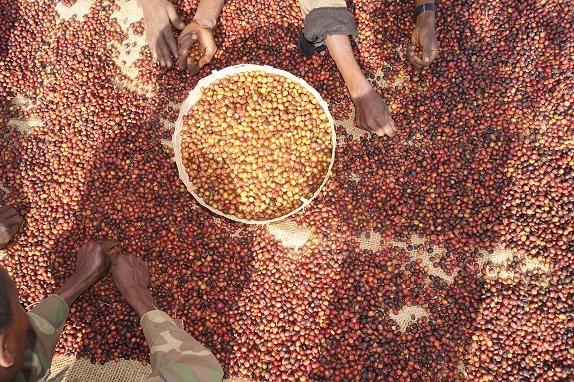
The Fog Valley producing area is about 1900-2000 meters above sea level. Aricha, formerly known as Idido, was owned by the famous Abdullah Bagersh at that time. Coffee produced by Bagersh would be marked with Idido Misty Valley (IMV), and sacks would be marked with the conspicuous word Bagersh, which is almost the guarantee of top Ethiopia. Well-known masterpieces such as very few batches of beans-Aricha and Beloya in cooperation with Ninety Plus in the United States, and even the general washing and tanning Yega Chuefei series have excellent reviews.
Although the Aricha/Idido washing plant is no longer owned by Abdullah Bagersh, according to Sweet Maria's 's interview, due to the retention of the vast majority of local staff, Bagersh procedures and standards have been retained to a considerable extent and quality has been maintained.
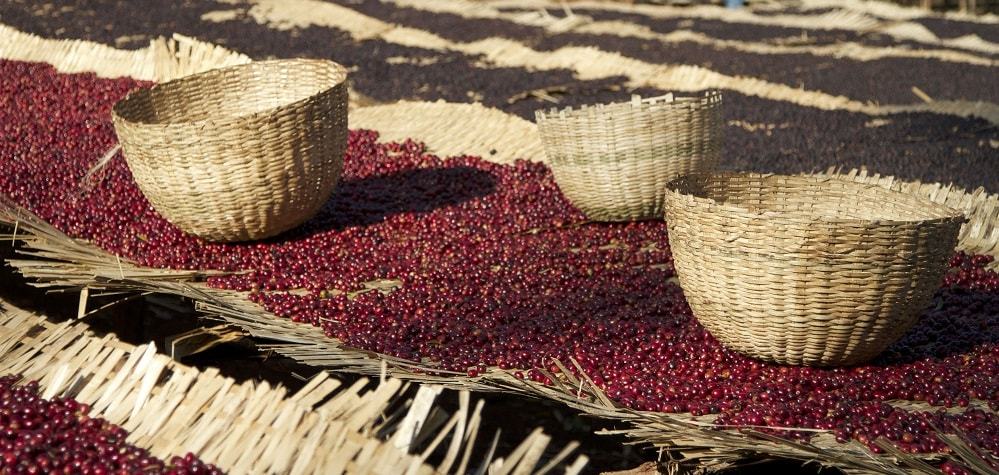
This batch is produced at the Kebel Aricha processing plant, where there are about 650,700 small coffee farmers who send ripe coffee berries here for processing in exchange for cash. After the treatment plant selects the available berries, they are directly exposed to the sun on the scaffolding and are turned every 2-3 hours in the first few days to prevent overfermentation. After four to six weeks of sun exposure, the workers will scrape off the outer pulp with a machine according to the weather and temperature, and then transport it to addis for storage. Usually, sun-treated beans are stored in the form of shell beans, and they are not shelled until they are exported to ensure the quality of raw beans. This batch of Sunshine Eriga is rated as G1 by ECX. It is excellent in appearance, consistency, freshness, dry aroma and flavor of raw beans. You can't miss those who like bright acidity and strong berry flavor.
02 | processing method
Each coffee from this processing plant can be considered a high-quality refined coffee, which shows better characteristics than other coffees. no matter which method of treatment is used, the coffee beans here can be considered to be the best coffee in Yega.
The traditional solarization treatment in Ethiopia is rough and smelly, which has been criticized by people. In 1959, the South American water washing method was introduced into the Yega Xuefei producing area. Most producing areas generally adopt the water washing treatment, that is, after the coffee fruit is peeled, the pectin layer is removed after fermentation and washing, and then dried.
Some coffee processing plants in the producing areas adopt the exquisite elevated shed sun drying method, which invests in high-intensity human labor, isolates the coffee fruit from contact with the ground, prevents the miscellaneous smell of soil in the process of sun exposure, and creates an unusually clean fruit flavor. After more than two weeks of sun exposure, dark brown coffee fruits are professionally stored, waiting for the whole flavor to ripen. Before sale, the sun-dried cherry pulp and sheepskin are removed, and then the unripe beans and over-fermented beans are removed. Strict control greatly improves the quality of sun-dried beans.
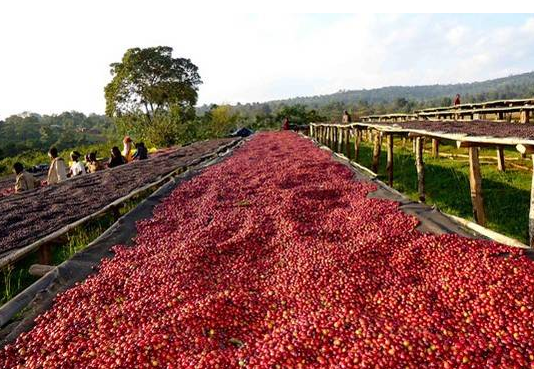
03 | Analysis of raw beans
This sun-treated coffee has slightly larger granules and slightly lower density and water content.
The color of Yirgacheffe Aricha Grade 1 raw beans is yellow and green, which is a typical color of sun-cured coffee, with uniform and plump particles and few defective beans.
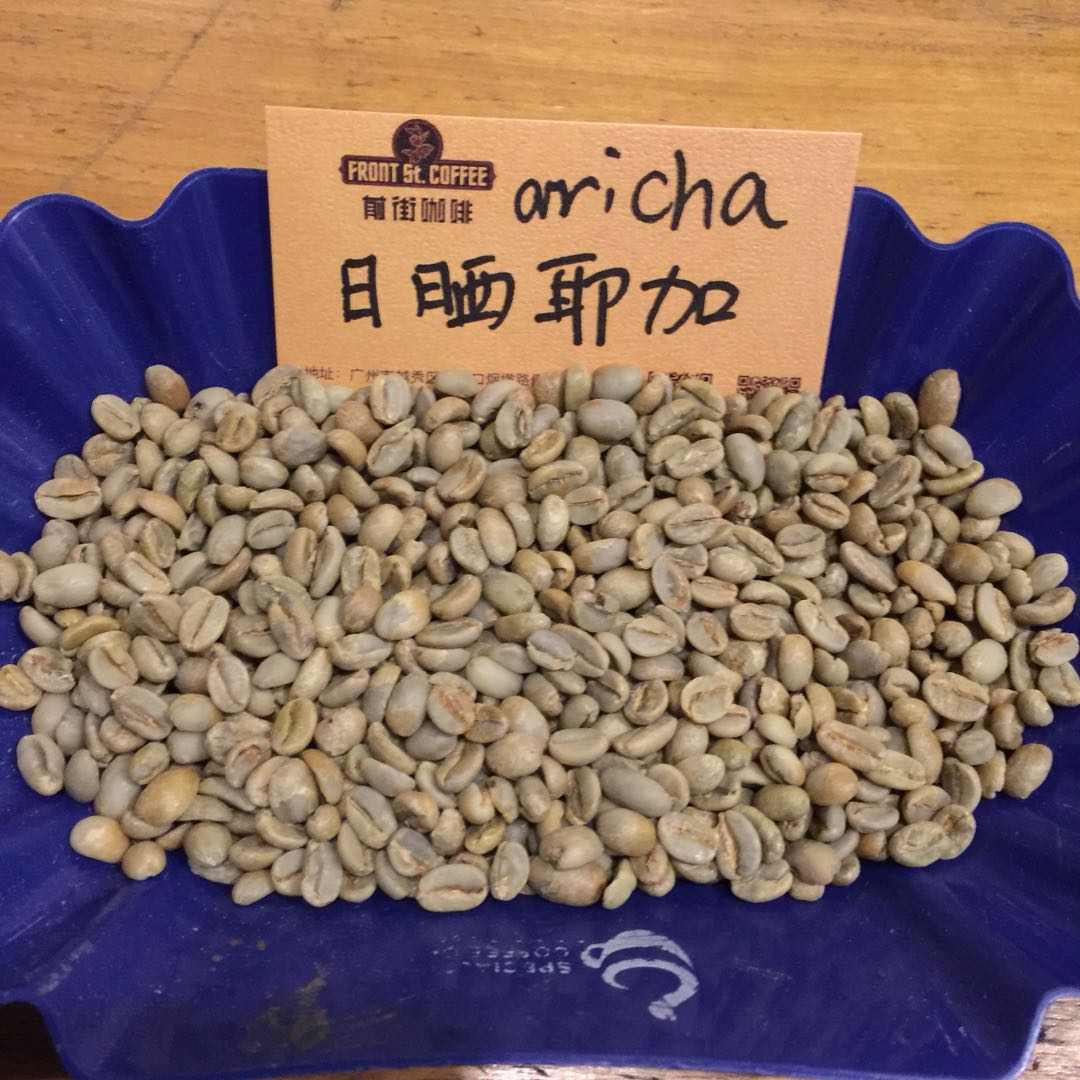
The use of ordinary sacks for export, the basic information of coffee printed and dyed on the sacks (processing plant, exporter, ICO code, processing methods, producing areas) the sacks are agricultural products packaging plastic bags, this coffee can best reflect its characteristics by shallow slow roasting.
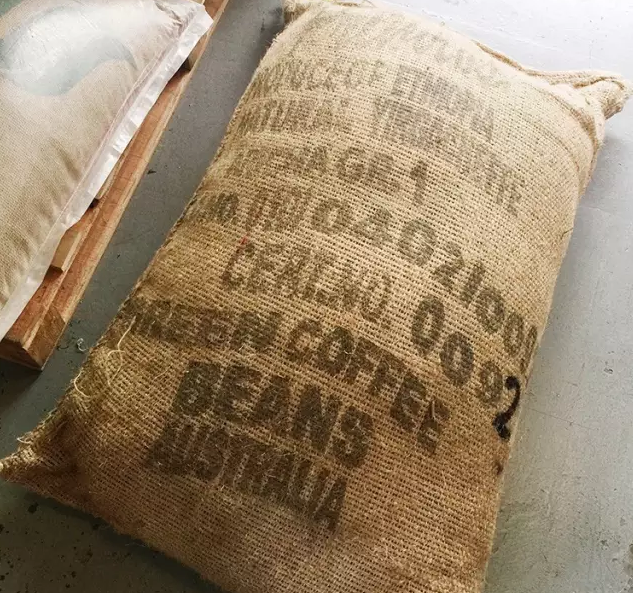
04 | Baking analysis
Beans with such a gorgeous flavor are certainly not suitable for deep baking, so the shallow slow roasting method of this coffee can best reflect its round and sweet, rich flower and fruit aromas.

Hard bean coffee is coffee that grows at a relatively high altitude, while coffee grown at a lower altitude is generally considered soft bean coffee. Higher altitude and lower temperature make the fruit ripen more slowly, while coffee beans that form harder and less pores are called hard beans that grow above 1200 meters above sea level.
The absorption capacity of hard beans to heat energy (the reaction to heat energy) is better than that of soft beans, so the development of its flavor is more complete. On the other hand, hard beans have high density and high water content, which also hinders the heat transfer. Use more firepower and higher bean temperature when baking.
Baking method: stretch the baking time longer, so adjust the firepower when the dehydration is complete, bake to the maximum when it explodes, and develop 1: 39 / 48 / 39 / 39 / 39 / 39.

Roaster Yangjia 600g semi-direct fire
Using quick-frying mode, the furnace temperature is 200 degrees Celsius into the pan, the throttle is set at 3.5 degrees Celsius and the firepower is adjusted to 160 degrees after 1 minute, the throttle is unchanged, the firepower is adjusted once at 148 degrees, it is reduced to 130 degrees, baked to 5: 03 ", the temperature is 151 degrees, the bean table turns yellow, the smell of grass disappears completely, dehydration is completed, the firepower is adjusted to 105 degrees, and the throttle is opened to 4 degrees.
In the 8th minute, ugly wrinkles and black markings appear on the bean table, and the smell of toast obviously changes to the smell of coffee, which can be defined as a prelude to an explosion. At this time, listen clearly to the sound of the explosion point, start to explode at 9: 07 ", adjust the firepower to 70 degrees, and the throttle is fully open (the firepower should not be so small as to be free of bursting sound). Put the pot at 194 degrees.

Baking: shallow baking
Cup test:
Roast one: strawberry, raspberry, vanilla, honeydew, juicy
Strawberries, raspberries, vanilla, honey, juice
Round and sweet, rich aromas of flowers and fruits, outstanding sweetness and weak acidity, showing a soft, red wine temperament as a whole.
Wet fragrance: ripe berries, fermented fruit wine
From the extremely smooth entrance to the delicate mellow thickness, the appearance of the sweet and sour ripe fruit is amazing and sweeter than any Yega I have ever drunk before. Yu Yun's performance is also quite good, worthy of the "fruit bomb", which can basically guarantee that the mouth can still feel sweet for half an hour after drinking.
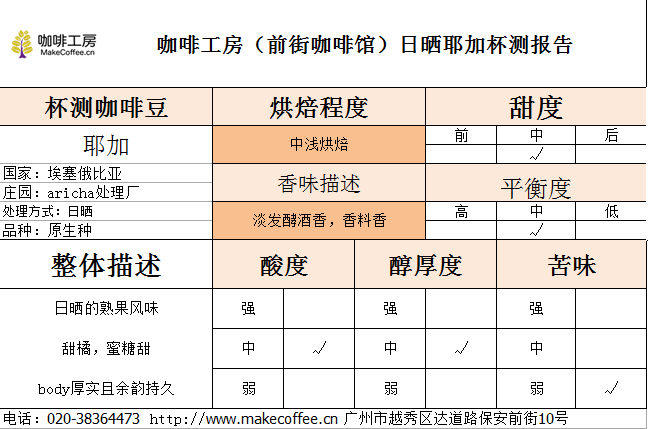
04 | Cooking analysis
The cooking method of Yejia Xuefei
As for the way of brewing, hand brewing and siphon brewing are the best. When you grind the beans, you can smell the sweet smell of the sun fruit.
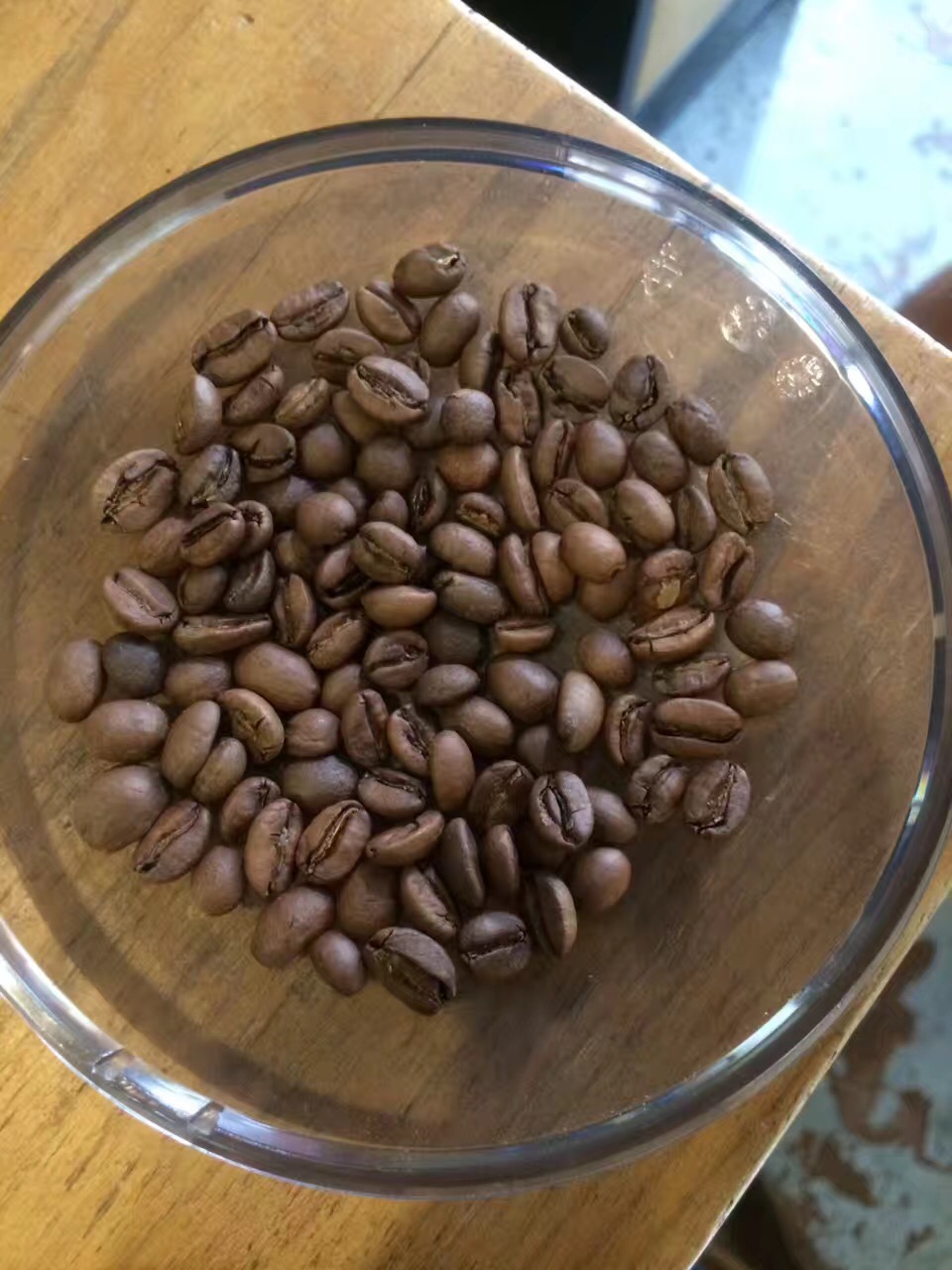
Gentle and delicate, sweet and lovely. Yega Chuefei exudes an extremely complex aroma and shows an extremely excellent taste that is difficult to describe.

V60 filter cup, 15g powder, water temperature 87 degrees, grinding 4, water powder ratio close to 1:15
31 grams of water is steamed for 29s
Segment: water injection to 99ml cut off, slow water injection to 230ml
31-99-100

Palate: the strawberry fruit is sour and tea at the end.
It has always been found that the baking and cooking skills of sun-dried beans are very challenging, but its unique rich fruit fermented flavor also fascinates many of the same people. This sunny Yejia snow non-Aricha, after hand extraction by V60, presents a unique translucent orange color and sweet and sour fruit flavor, from hot to cold, there will be different levels of drinking taste, after drinking, the residual taste in the empty cup You should be able to smell the fruity aroma of wine.
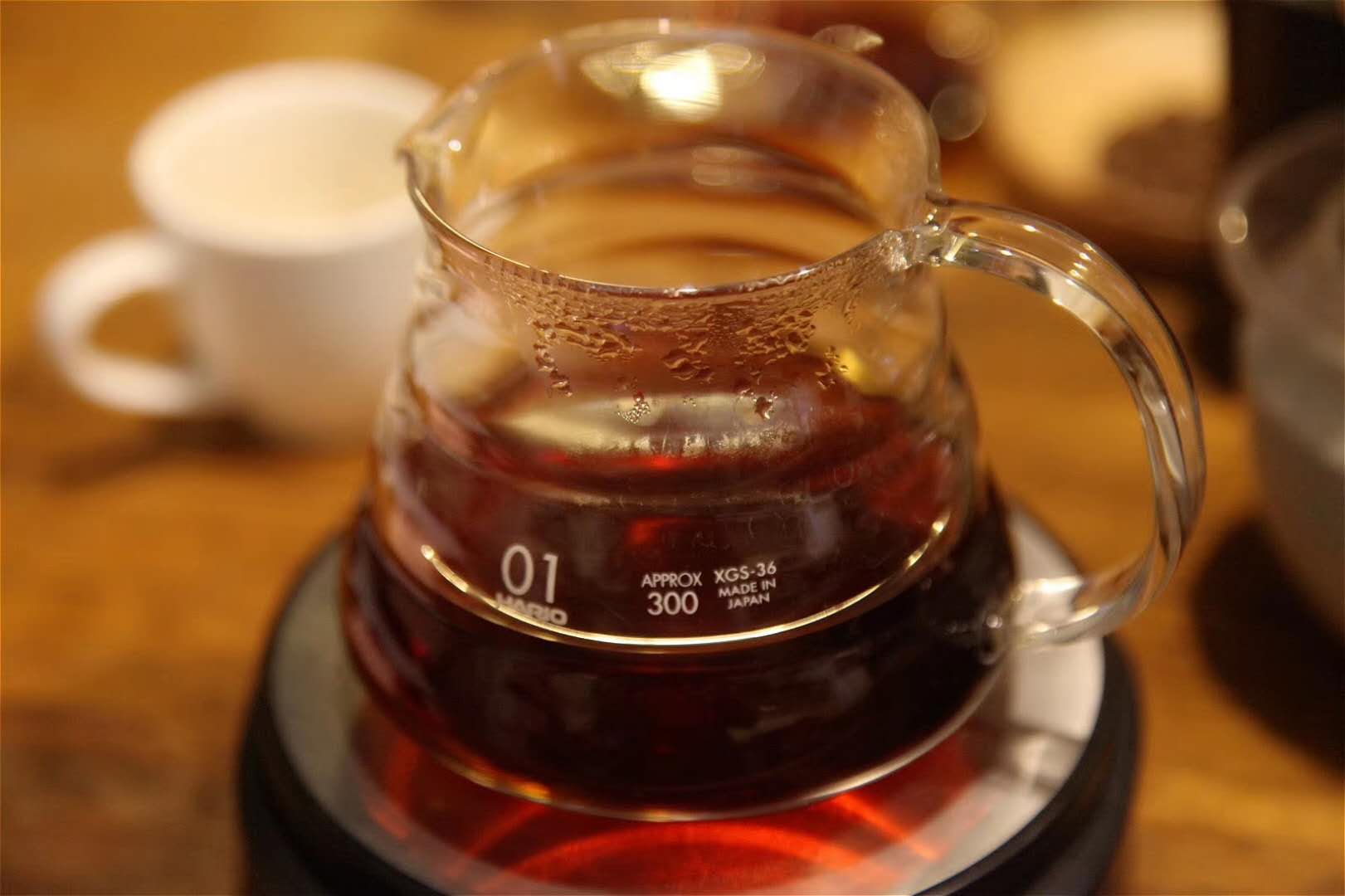
To learn to brew coffee, you should also learn to taste coffee and try to drink different types of coffee. Well, yes, different types of coffee.
Today we are going to talk about how, as rookies who do not know anything about coffee, how to taste a cup of Yejiaxuefei step by step.
How to get a cup of Yega Chuefei right?
Yega Xuefei has a characteristic, that is, citrus flavor, but this is very general, this is a regional feature, coffee beans will have different taste because of different treatments.
The coffee beans after harvest must enter the treatment program immediately, otherwise they will begin to ferment, making the coffee beans have a bad smell. There are two methods of treatment: "solarization" and "washing", which will cause different flavors.
Sun-dried beans have a complete natural mellow flavor, gentle aroma and more gum; washing rules have a good mellow taste, high aroma and lively sour taste.

The tasting item Yega Xuefei is divided into seven steps:
one
Smell the dry aroma of coffee
Washed Yega Chuefeiduo has dry aromas of flowers and fruits, aromas of lemon, and rich aromas of wine, flowers and fruit in the sun.
two
Perception of entrance texture
When the coffee liquid enters the mouth, stimulate the taste buds, feel the coffee liquid with the tongue, and feel the impact on the mouth.
In professional coffee tasting, this indicator is also known as taste, which is visually interpreted as water and syrup or milk. The texture of syrup and milk is thicker than water. If washed with water, Yega Chuefei (shallow baked) tastes very good. Sun-washed Yega Chuefei is full and rich in soup, which can also be understood as a sense of stickiness.
Smoothness refers to a sense of smoothness, similar to drinking milk. The coffee, which is usually slippery, enters the mouth and stops for a moment, and the feeling swallowed through the throat is round, natural and effortless. On the other hand, poor quality coffee will not feel smooth when swallowing, giving a tight and rough touch to the throat.
The smoothness of coffee has a certain relationship with the thickness, and sometimes it will be called "thick and smooth". The more mellow the coffee is, the more obvious the smoothness will be.
three
Cognitive cleanliness
There is some astringency in the coffee, some pink, some earthy flavor, such coffee is not clean, high cleanliness can make the taste relaxed and pleasant, washed Yejia Xuefei taste will be clean and clear
four
Recognize acidity
The sweet and sour substances in coffee are the components of the complexity of coffee flavor. Yega Xuefei is sour, but it is very comfortable and round in sweetness. Yega snow washed contains rich sour flavors such as citrus and berries.
five
Feel the sweetness
Sweetness is the simplest and most intuitive aspect of tasting coffee. A good cup of coffee has almost no bitterness, so sweetness is more obvious.
Sweetness is loved and accepted by everyone, and pleasant and lively sweetness will match well with acid. When we drink coffee, there are superior sweetness with lively sour, sour-sweet balance, sour-sweet conversion.
Sun Yega Chuefei coffee with sweetness is like a fruit, in the coffee beans contain fructose, sweet, similar to sucrose, brown sugar, caramel, full of taste.
six
Taste the flavor Flavor
When coffee is in your mouth, you can feel its flavor and usually distinguish between sweet, salty, sour and bitter coffee.
seven
Perceptual aftertaste
After drinking coffee, there will always be a taste back from the throat, called "back dry". If it makes people feel dry, it is generally called "dry" or "dry throat".
The aftertaste of the sun Yega Chuefei is very long and clear, and a cup of coffee with a good taste will make the aroma stay in the mouth longer and the finish longer.
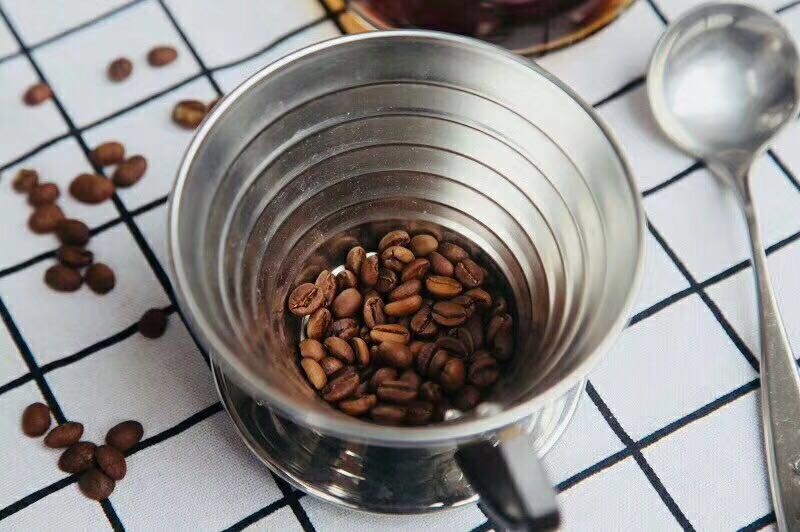
Qianjie Ethiopian Sun Yega Chuefei Coffee Bean arichaG1 imported boutique single baking
Purchase link: https://item.taobao.com/item.htm?spm=a1z10.5-c-s.w4002-15673140460.47.74ad26dbYsFCgG&id=523032432719
Important Notice :
前街咖啡 FrontStreet Coffee has moved to new addredd:
FrontStreet Coffee Address: 315,Donghua East Road,GuangZhou
Tel:020 38364473
- Prev
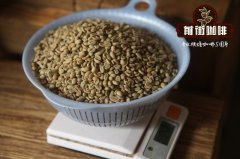
What are the flavor and taste characteristics of Brazilian coffee yellow bourbon? Introduction to yellow bourbon varieties of Brazilian coffee
Professional coffee knowledge exchange more coffee bean information please follow the coffee workshop (Wechat official account cafe_style) Brazilian coffee yellow bourbon coffee varieties of flavor and taste characteristics? Introduction of Brazilian coffee yellow bourbon varieties? Main flavor: hazelnut, citrus, sweet, rich fruit flavor, pure sweet mellow, showing multi-level flavor varieties: yellow bourbon coffee beans
- Next
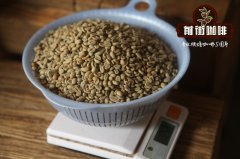
What are the flavor and taste characteristics of Brazilian coffee yellow bourbon? How to cook Brazilian yellow bourbon coffee beans
Professional coffee knowledge exchange more coffee bean information please follow the coffee workshop (Wechat official account cafe_style) Brazilian coffee yellow bourbon varieties of the flavor and taste characteristics? How to cook Brazilian yellow bourbon coffee beans? Treatment: naturally sun-dried so-called bourbon species (Bourbon), native to Reunion Island in the Indian Ocean, where green fruits appear bright red and yellow when ripe
Related
- Detailed explanation of Jadeite planting Land in Panamanian Jadeite Manor introduction to the grading system of Jadeite competitive bidding, Red bid, Green bid and Rose Summer
- Story of Coffee planting in Brenka region of Costa Rica Stonehenge Manor anaerobic heavy honey treatment of flavor mouth
- What's on the barrel of Blue Mountain Coffee beans?
- Can American coffee also pull flowers? How to use hot American style to pull out a good-looking pattern?
- Can you make a cold extract with coffee beans? What is the right proportion for cold-extracted coffee formula?
- Indonesian PWN Gold Mandrine Coffee Origin Features Flavor How to Chong? Mandolin coffee is American.
- A brief introduction to the flavor characteristics of Brazilian yellow bourbon coffee beans
- What is the effect of different water quality on the flavor of cold-extracted coffee? What kind of water is best for brewing coffee?
- Why do you think of Rose Summer whenever you mention Panamanian coffee?
- Introduction to the characteristics of authentic blue mountain coffee bean producing areas? What is the CIB Coffee Authority in Jamaica?

